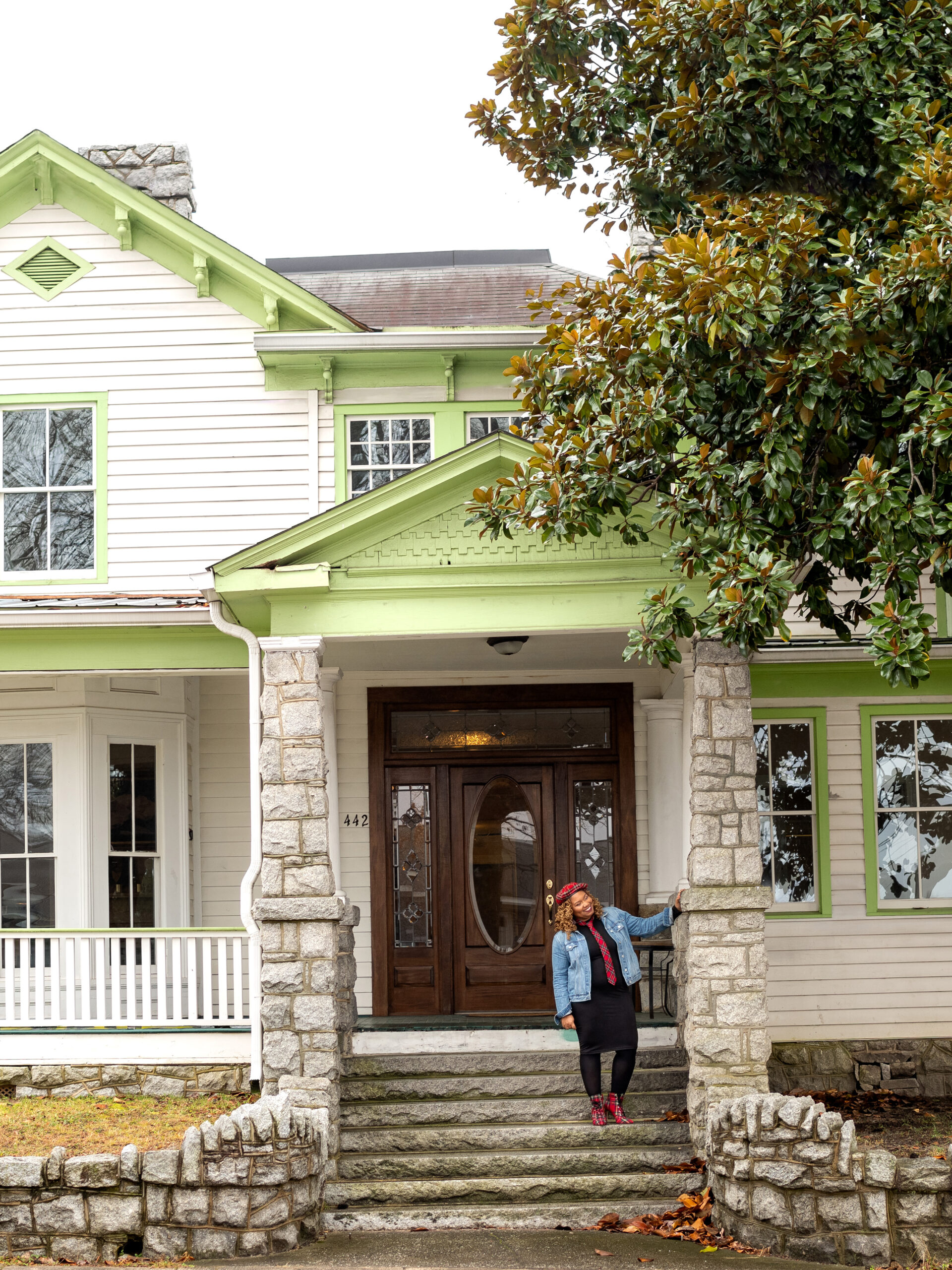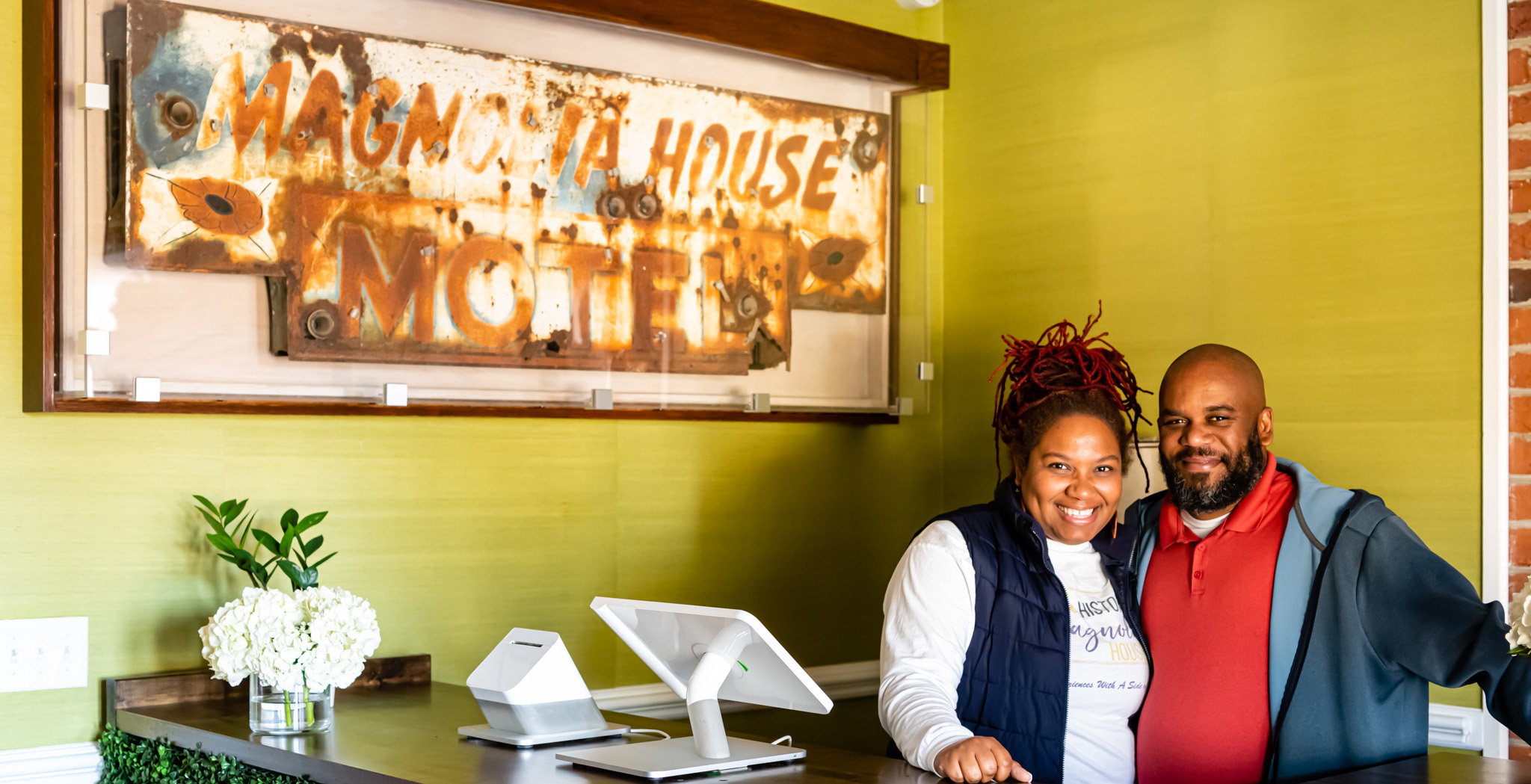As my train rumbled across the dark forests of Virginia, I looked around at my room in Amtrak’s first-class sleeper section and thought about how, not so long ago, I wouldn’t have been allowed in this section of the train. As a Black travel writer, I often cross color lines I might have otherwise not known were there. It was fitting, given I was traveling to a hotel born out of the pain of these color lines—The Historic Magnolia House in Greensboro, North Carolina, a bed and breakfast with Black history roots that run deep.
When I arrived late at night to the inn, I felt a sensation of a homecoming, even though I’d never been to this hotel before. “Our visitors naturally get emotional,” owner Natalie Miller tells Sweet July. “Especially if they’re Black, they start thinking about their own family and those stories. And they connect themselves to the history of the house.”
Opened in 1949, the Historic Magnolia House is a Green Book Hotel, one of the many sites in the Negro Motorist Green Book, first published in 1936 by its founder Victor Hugo Green. The Green Book helped Black travelers navigate a segregated America, where stopping in the wrong place could mean grave danger. It listed safe hotels (or Black families willing to rent out rooms), restaurants, and gas stations all across the country, in places where segregation was inscribed in either the law or in the local consciousness. According to Miller, The Magnolia House was the only safe spot for Black travelers to stop in between Richmond and Georgia.
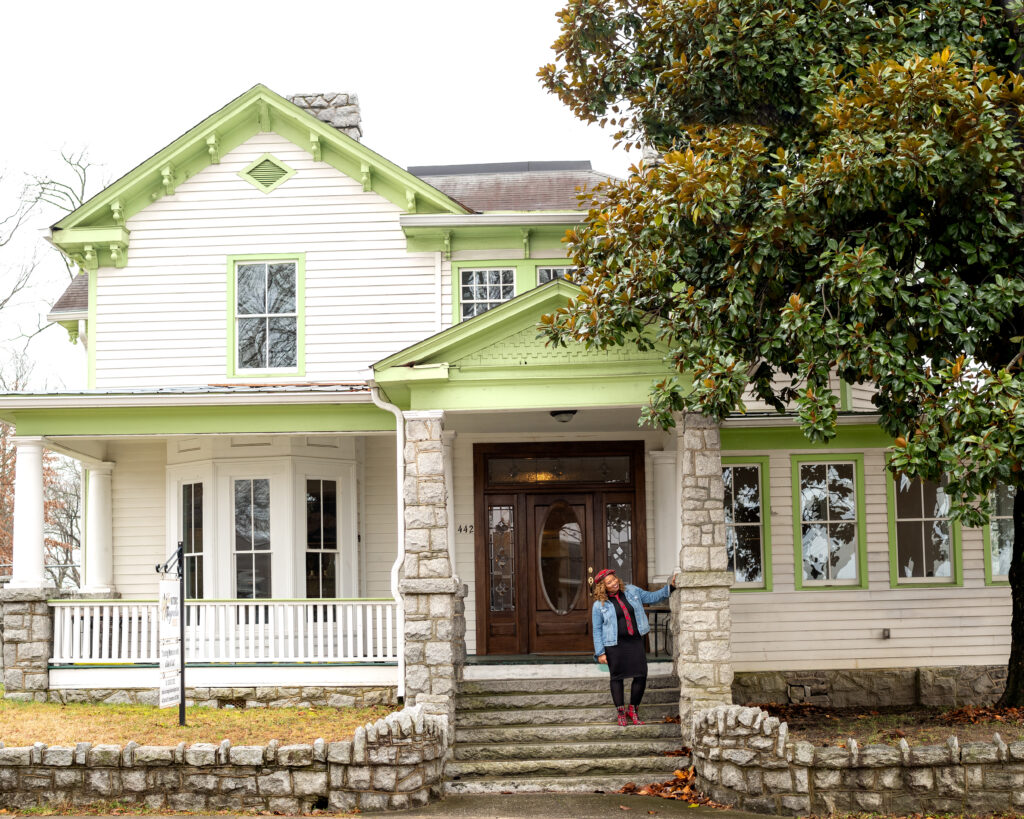
“When James Brown stayed here, he would always be playing in the streets with the kids,” says Miller. “And he wouldn’t bring his band with him every time because he’d want to use local musicians. Louis Armstrong was one of our extended stayers, he’d be here almost three weeks at a time.”
Back then, Miller and her family lived in Greensboro. They didn’t own the Magnolia at the time, but were witnesses to the Magnolia House falling into disrepair from lack of maintenance. Unwilling to let this history fade away, Miller’s father, Sam Pass, bought the house in 1995 from the original owners, the Gist family, to keep it from being demolished. After renovations and planning, Natalie and her husband Devin Miller reopened the Historic Magnolia House in December 2021.
It is not just a hotel, but an interactive museum showcasing the history of Black travelers during Jim Crow. The Millers work closely with research teams, universities—including the nearby HBCU North Carolina Agricultural and Technological University—to fill this hotel with exhibits and signage about its history, the Black history of Greensboro, Civil Rights, and the cultural legends that stayed there. The inn is also a block away from another historic HBCU, Bennett College for women, and a few of the students work here part-time. They also listen to locals and guest’s stories, fact-checking them with research teams before including it in the exhibits.
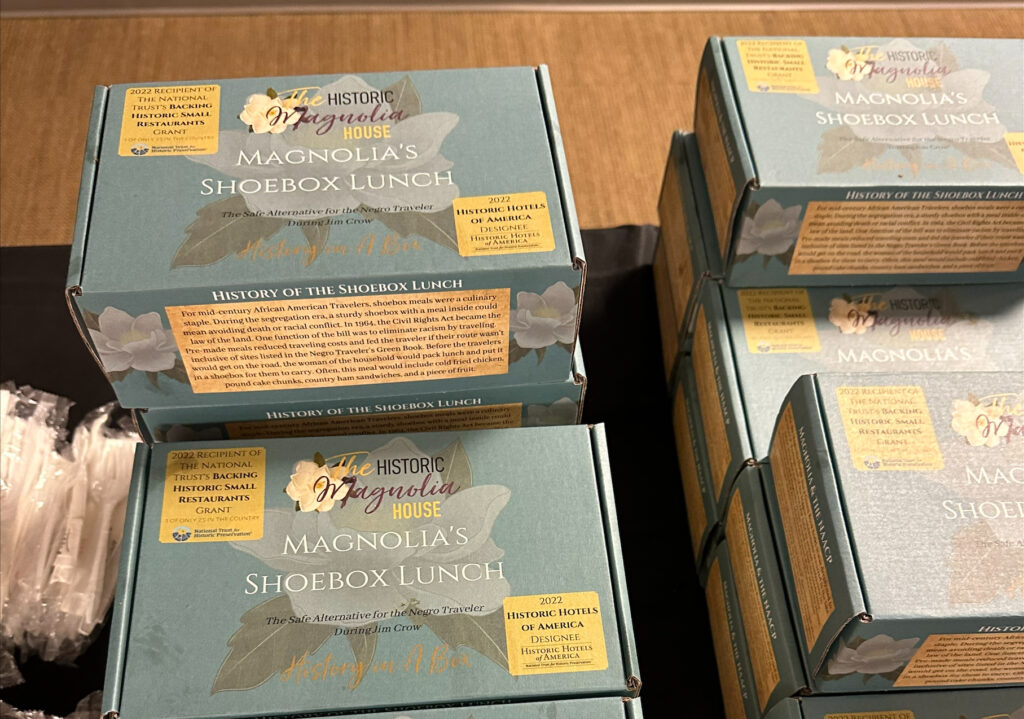
One of their most unique programs is the Shoebox lunch, which recreates how Black travelers ate during Jim Crow. Being unable to stop at restaurants, they’d buy meals from gas stations (along with a 25 cent copy of the Green Book and a can full of gas) so they wouldn’t have to stop where they’d be in danger. Those meals often consisted of fried chicken, boiled eggs, potato salad—things that would keep. Under Chef Yancey Williams, the Shoebox lunches look much the same, with dishes like fried chicken sandwiches and meatloaf, coleslaw and mac and cheese.
“As a living museum and an educational experience, we want to give a holistic view of what it was like traveling while Black,” says Miller.
Many places that were once in the Green Book are still operational, like the Copper Queen Hotel in Bisbee, Arizona, but the work the Magnolia House does around this public education is unique. Other Green Book hotels no longer exist—I myself came across an abandoned hotel for Black travelers in Wilson, North Carolina, called the Orange Hotel.
A charming four-room hotel, the Magnolia immediately creates a sense of intimacy. Each room is based on real travelers who found comfort and community at the inn. The Baldwin room has a dark, academic vibe, complete with a desk with a typewriter. The Carlotta room, named after the Carlotta Club, once an important stop for musicians, is all pink and crystals and furs also reflecting the Queens of Soul who stayed there like Tina Turner, Gladys Knight, and Lena Horne. Kind of Blue is a blue-themed room with its own bathroom, based on Miles Davis’ song by the same name. The Legends is sporty and collegiate, with a copper soaking tub, meant to pay homage to the Black athletes like Jackie Robinson who visited the hotel. You can also rent out the entire house for groups or events—it’s a very popular destination for weddings.
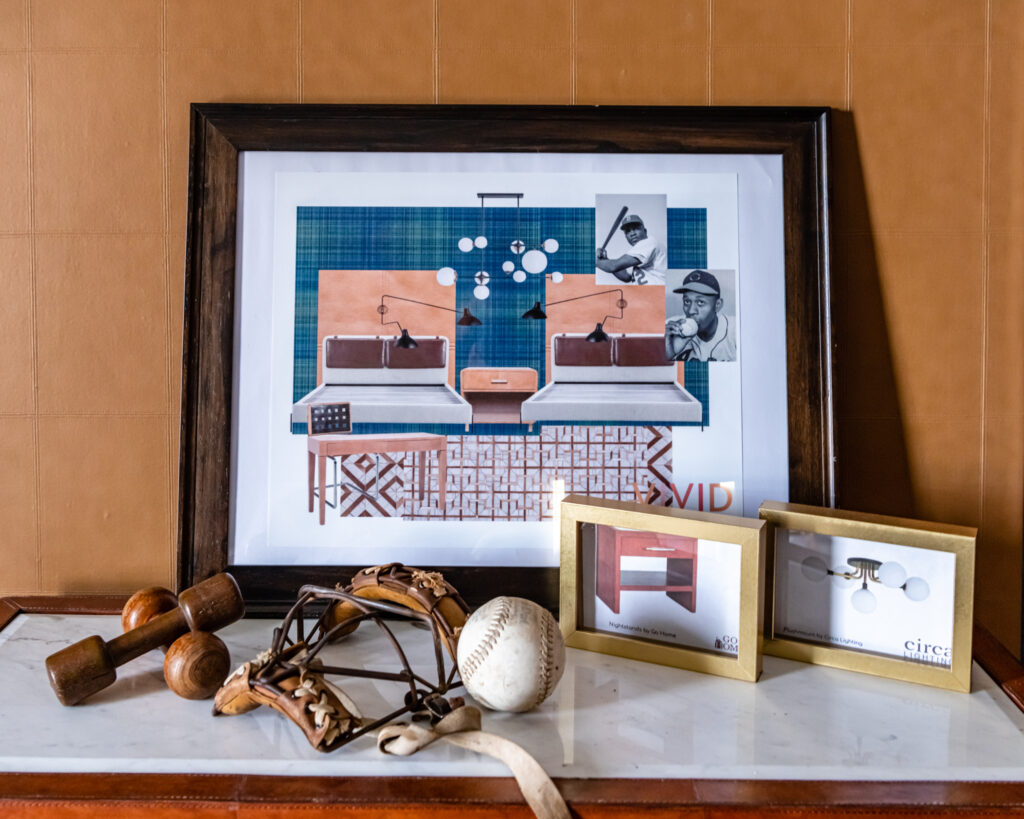

When I arrived at Greensboro’s train station en route to the Magnolia House, something pulled me towards a nondescript basin in the corner, the same color as the light brown vintage tile on the wall. The basin was clearly a water fountain, no longer in use, clearly different from the other gold water fountains in the room. Immediately, I knew this had to have been the colored fountain, a holdover from the station restoration in 2005. But there was no signage to commemorate it, nor had the fountain been destroyed or repurposed into a working fountain. It was strange to be faced with such an obvious piece of history in a train station that clearly wanted to preserve and celebrate its Southern history. Like so many places in the South regarding slavery and Jim Crow, it existed in the liminal space between remembrance and erasure.
But places like Magnolia House fill up space with remembrance, by honoring our ancestors, celebrating them and acknowledging their pain. It allows plenty of room for joy but it doesn’t brush over the history.
I thought about the dark parts of Black history, of my own family’s history, the entire time I stayed there. But I also felt at peace, like I was amongst family. Every morning, Chef Williams made me pretty much whatever I requested for breakfast, lunch, and dinner—an oatmeal fruit bowl, a fried chicken meal that surfaced memories of Soul Food Thursdays at Howard University, an omelet with home fries. It felt surreal at times, to be eating in the same dining room where Jackie Robinson used to chow down on molasses and biscuits.

On my last night at the hotel, they put on a Miles Davis concert, performed by the University of North Carolina at Greensboro (UNCG) Jazz Quartet, to celebrate the friendship between the jazz singer and Buddy Gist, the son of the hotel’s original owners. Julian Kennedy, the pianist and singer, broke my heart with a rendition of Ella Fitzgerald’s song “Midnight.” And there, I met a young Black couple, Tiffany Alston and Stephen Young, who had a goal of traveling the country to visit other Green Book sites. “We want to bring awareness and help preserve this history,” Alston told me.
After the concert was over, we all sat on the back patio, drinking and eating caramel cake as everyone talked about why they loved Miles Davis. Alston Harris, a member of the quartet and a student in the Miles Davis Jazz Program at UNCG, told me that Davis was, “a true pioneer. Every decade he turned himself into a different being.”
That’s what makes the Magnolia House special. It is more than just a hotel. It is a vital site of historical preservation, cultural memory and local gathering. It is a place where people can come and sit on the porch, sipping tea and trading stories about Black luminaries. It’s where people can connect their family histories. Segregation was a great evil. But here, at this hotel, we are able to come together and honor how our ancestors not only survived it, but built a thriving culture and community that outshone the cruelty. When it was time for me to leave, I felt as though I were leaving home, leaving a piece of myself behind. And I was, because here, Black history is eternal.






